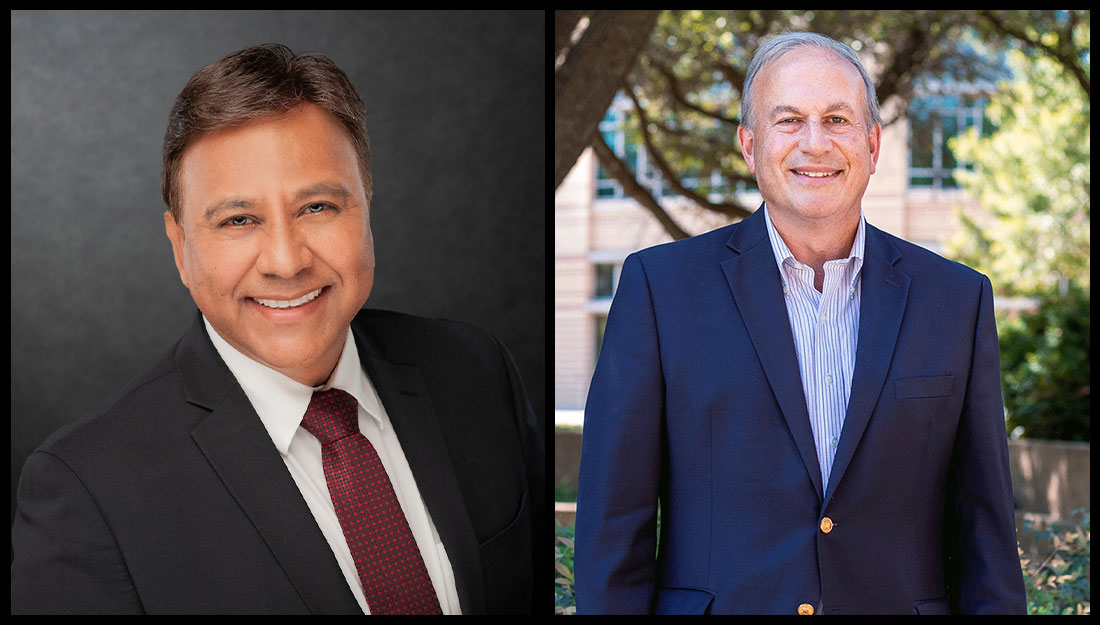Finding the perfect “Match”

For Danielle Debacker Dang and John Dang, medical school has been a life changing experience. The two met the first day of medical school orientation in 2014, in April 2017 they were married, and on Match Day, March 16, 2018 they learned where they’ll complete their medical residencies.
Danielle made Aggie history on Match Day as she became the first female medical student at Texas A&M to match in neurosurgery—one of the most difficult specialties in medicine. She will head to at Inova Fairfax Medical Campus later this summer to begin training. As a Division I collegiate gymnast and wife of a commissioning officer, Danielle said she was inspired to go into neurosurgery because of the potential she saw to help athletes and members of the military who experienced traumatic brain injury.
“Medicine is certainly changing, and there’s a much-needed movement to incorporate more diversity in all fields. I am very honored to be the first to represent that movement in neurosurgery at A&M and immensely grateful to my mentors for supporting me throughout this process,” Danielle said. “I feel inspired that I can help show another way in which women can lead in medicine. I view it as my personal responsibility to relentlessly pursue this goal the right way so I can help pave the way for female applicants following me.”
Each medical school does things a little differently on Match Day, the day that all fourth-year medical students across the country find out (at the same time) where they “matched” for the next step in their medical careers. At Texas A&M, each soon-to-be physician comes to the stage to their favorite song in order to receive the envelope that contains their residency assignment. Once all students have their envelopes, the entire class opens their assignments at the same time. It’s an emotional and exciting morning as cheers, laughter, shrieks and tears serve as the soundtrack to a sea of hugs, high-fives, and letter-waving as students ripped open the envelopes containing their future.
For Danielle and John Dang geography was crucial. John will be going on to complete an internal medicine residency at Walter Reed National Military Medical Center in Bethesda, MD while Danielle will be in Fairfax, VA. This means they can live in the same home during their residency training.
“Doing a non-traditional couple’s match, in which we cannot officially ‘couple’s match’ due to John’s independent military match, was absolutely a tough process to digest,” said Danielle. “I am so lucky to have such a supportive and talented husband who inspires me to grow personally and professionally.”
The impact of Match on medical students
The culmination of countless hours of studying, test taking, lectures and clinical rotations, Match Day is held annually on the third Friday in March. It’s the final step of a year-long process that matches graduating medical students with residency programs in their desired specialty. Residencies are the “graduate” portion of medical education.
During the first half of their fourth year, medical students apply for and then interview with their desired programs. Then, students submit their list of choices in order of preference–and at the same time residency program directors submit their rank-ordered lists of preferred candidates–to the National Residency Matching Program. A computer then matches each student to the residency program that is highest on the student’s list and that has offered a position to the applicant. Residency programs can vary in length from three years for general medicine/family practice specialties to eight years for the most specialized of surgeons.
The 2018 Main Residency Match is the largest in NRMP history. A record-high 37,103 applicants submitted program choices for 33,167 positions, the most ever offered in the Match. The number of available first-year (PGY-1) positions rose to 30,232, an increase of 1,383 over 2017. This year, 190 Texas A&M fourth-year medical students participated in the event at the College Station Hilton.
Some medical students, like John Dang, participated in the Military Match, a separate Match for future physicians who will enter the U.S. military branches upon graduation. Many of those who participated in Military Match attended the Match Day festivities to celebrate with their colleagues—or like John, with his wife.
Danielle and John weren’t the only couples who Matched. Sarah Freathy and Bryce Gagliano both Matched at Baylor University Medical Center in Dallas. Casey and Callie Leamon both Matched at McClennan County Family Medicine Residency in Waco, Texas.
“What the Match ultimately does is tell you where you will make one of the biggest transitions of your lives,” said Carrie L. Byington, MD, dean of the Texas A&M College of Medicine, senior vice president of the Texas A&M University Health Science Center and vice chancellor for health services at The Texas A&M University System. “Apart from parenthood, the transition from medical student to physician has to be one of the most profound transitions in all of the human experience. Becoming responsible for the well-being of others and learning to carry the weight of that responsibility is what residency is all about. We are very proud of these students and the impact they will make on communities.”
The impact of Match on communities
While Match Day is important for these students, it is also very important for patients. Doctors tend to practice medicine in the state they complete their residencies, making Match Day particularly significant to not only medical students, but also for the patients and communities they’ll impact in the future.
Texas is facing a physician shortage, particularly in primary care and in rural areas. Thirty-five counties in Texas have no physician of any kind, 80 counties have five or fewer physicians and 147 counties have no OB-GYN. About half of this year’s Texas A&M medical students matched into primary-care specialties such as internal medicine, family medicine, obstetrics and gynecology and pediatric medicine.
Recently, Texas A&M was ranked among the nation’s best when it comes to staying in the state to practice, entering primary care and locating in underserved and rural areas by the Missions Management Tool 2017 report, published by the Association of American Medical Colleges (AAMC).
“About half of these students are going to stay in Texas, and they’re going to serve our communities around the state,” Byington said. “The other half of them will be training in other states, and we know that they’re going to get an excellent experience, and we hope we’ll draw them back to the state of Texas once they’re practicing medicine.”
Media contact: media@tamu.edu


